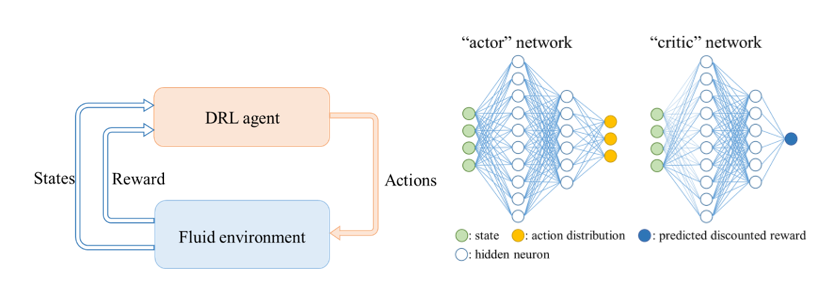| http://yuanjian.cnki.com.cn/cjfd/home/Detail/SDLJ202003 |
CMHL研讨会精选专辑——聚焦船海复杂流场高精度和精细化计算
随着船舶与海洋装备向深远海、智能化、无人化方向发展,船海装备对复杂海况的适应性能力和智能操控的要求越来越高。上海交通大学船海计算水动力学研究中心(CMHL)针对海洋装备发展需求,特别是满足海洋装备设计数值化、精细化、智能化需求,瞄准学术前沿,致力于船舶与海洋工程计算水动力学的先进数值方法研究,高性能计算软件的自主研发,以及高新船舶、海洋装备、深海潜器、海洋能源和空间开发利用中CFD数值模拟的应用研究。
CMHL研讨会(CMHL Symposium)是以CMHL研究中心英文缩写字母命名,围绕船海工程计算水动力学方法研究、软件开发和工程应用等主题,每年召开一次或两次的专题学术研讨会。每次CMHL研讨会都邀请船舶与海洋工程计算水动力学领域国内外资深学者和一线研究人员做大会报告和主题报告,研讨交流船海计算水动力学最新研究和应用成果,为本领域专家学者、青年学生、软件开发者、软件用户、研究院所和企业研发人员提供开发和自由交流平台,促进高校、研究院所、企业、软件开发公司的深入沟通交流与合作。
第三届CMHL研讨会于2019年12月12-13日在上海交大召开。本次研讨会由上海交通大学CMHL研究中心和水动力学研究与进展(JHD)编委会联合主办,一共有三个大会报告和五个主题报告。八个报告内容丰富、精彩,受到了大家热烈欢迎和高度评价。会后,JHD编委会在Journal of Hydrodynamics杂志2020年第2期上,做了CMHL研讨会专栏,收录了三篇主题报告论文。
第一篇论文由日本九州大学胡长洪教授提供,《An Unstructured Mesh Method for Numerical Simulation of Violent Sloshing Flows》(https://doi.org/10.1007/s42241-020-0019-z,share this article:https://rdcu.be/b4Qw3)介绍了一种基于非结构网格方法的雷诺平均方程(RANS)新求解器和用此方法对有复杂内部结构的液舱内流体剧烈晃荡现象的数值模拟结果。数值求解器采用UMTHINC方法(一种面向非结构网格的高阶界面捕获方法)来追踪自由表面,以及数种RANS湍流模型来模拟湍流流动。液舱运动的模拟方法是给运动方程中加上相应的体积力。通过对几种不同振动频率的方形液舱内流体晃荡问题的数值模拟,讨论了UMTHINC界面捕获方法的性能,以及各种RANS湍流模型对压力计算精度的影响,以及带有垂直薄板对液舱内流体晃荡的影响。
第二篇论文由大连理工大学张桂勇教授提供,《A Sharp-Interface Immersed Smoothed Point Interpolation Method with Improved Mass Conservation for Fluid-Structure Interaction Problems》(https://doi.org/10.1007/s42241-020-0025-1,share this article:https://rdcu.be/b4Qxf)介绍了在浸没光滑点插值方法(IS-PIM)基础上,针对流固耦合浸没类方法采用非贴体网格导致的边界捕捉不准确、流固耦合力计算不准确以及虚假压力振荡三个关键问题,提出一种带有质量守恒形式的尖锐界面浸没光滑点插值方法(Sharp-ISPIM-Mass)。针对IS-PIM边界上固体网格节点与流体节点并非一一对应而导致的流体域不能准确捕捉到固体域边界的问题,提出采用尖锐界面方法进行了修正,使得流体域可以准确地捕捉到固体域边界。针对IS-PIM忽略固体所受到的流体粘性力作用而导致的流固耦合力计算不准确问题,提出了一种高精度粘性力修正的流固耦合力计算形式。针对IS-PIM引入虚拟流体后,固体域边界两侧的流体流入及流出质量不完全相等导致的虚假压力振荡问题,通过改变部分流体域节点的压力值来保证流体质量流量不会穿过固体域边界。
第三篇论文由上海交通大学赵伟文博士提供,《Vortex Identification Methods in Marine Hydrodynamics》( https://doi.org/10.1007/s42241-020-0022-4, share this article: https://rdcu.be/b4Qxj ) ,介绍了目前船舶与海洋工程水动力学领域几种常用的涡识别方法。通过自主开发的求解器naoe-FOAM-SJTU计算得到的数值结果,验证了其在实际工程问题中的适用性,包括敞水螺旋桨试验、船舶阻力试验、船-桨-舵干扰、海洋立管VIV以及Spar平台VIM等。通过比较验证发现,Q和lambda2方法对于等值面阈值的选取较为敏感,较难得到正确的涡结构。而经过归一化处理后的Liutex-Omega方法在涡识别和可视化方面展现出了较好的适用性,能够捕获到仅保留由纯旋转运动产生的涡结构,同时还能捕捉到强涡和弱涡的结构,并且对等值面阈值的选择不敏感。针对船舶水动力学问题中涡强度较大的特点,通过改变方法中相关系数值的不同设置就可以。
客座编辑简介:
 万德成博士是上海交通大学船舶海洋与建筑工程学院教授,博士生导师,长江学者特聘教授,国家重点研发计划首席科学家,海洋工程领域全球高被引中国学者,上海市优秀学术带头人,上海东方学者(跟踪计划)特聘教授,上海浦江人才,教育部新世纪优秀人才,上海交通大学船舶与海洋工程计算水动力学研究中心(CMHL,http://dcwan.sjtu.edu.cn/)主任。获2019年中国科协第四届优秀科技论文奖,是海洋工程领域唯一获奖论文。2018和2019年连续入选Elsevier全球高被引中国学者。2017年以首位中国学者身份当选国际船舶CFD会议指导委员会委员,2018年以首位中国籍专家身份担任国际海洋与极地工程学会(ISOPE)水动力学委员会主席。目前担任《Ocean Engineering》,《Applied Ocean Research》等6个国际杂志编委,以及《Journal of Hydrodynamics》(担任副主编),《Journal of Ocean Engineering and Science》(担任副主编),《水动力学研究与进展》(担任执行编委) 等9个国内杂志编委。
万德成博士是上海交通大学船舶海洋与建筑工程学院教授,博士生导师,长江学者特聘教授,国家重点研发计划首席科学家,海洋工程领域全球高被引中国学者,上海市优秀学术带头人,上海东方学者(跟踪计划)特聘教授,上海浦江人才,教育部新世纪优秀人才,上海交通大学船舶与海洋工程计算水动力学研究中心(CMHL,http://dcwan.sjtu.edu.cn/)主任。获2019年中国科协第四届优秀科技论文奖,是海洋工程领域唯一获奖论文。2018和2019年连续入选Elsevier全球高被引中国学者。2017年以首位中国学者身份当选国际船舶CFD会议指导委员会委员,2018年以首位中国籍专家身份担任国际海洋与极地工程学会(ISOPE)水动力学委员会主席。目前担任《Ocean Engineering》,《Applied Ocean Research》等6个国际杂志编委,以及《Journal of Hydrodynamics》(担任副主编),《Journal of Ocean Engineering and Science》(担任副主编),《水动力学研究与进展》(担任执行编委) 等9个国内杂志编委。
exploring-the-deep-reinforcement-learning-in-fluid-engineering
当前,深度强化学习在工业流体力学中的应用得到了广泛关注。工业领域,尤其是航天航空、海洋船舶及能源动力等行业,有大量流体控制及优化设计的难题趋待解决。发掘此类方法的极限潜力仍需要一定的时间,特别是针对处理工业流体力学中无理论最优解的控制问题及优化设计。传统方法在流动控制及优化设计领域面临应对非线性及高维复杂性挑战,人工智能的飞速发展带来了新的希望,其中深度强化学习为解决流体控制及优化设计提供了一个崭新的手段。本期聚焦深度强化学习在流动控制及优化设计中的应用,以探索深度强化学习在相关领域应用潜力。本期内容来自2019年12月13日至16日在上海召开的“高保真计算方法及应用国际会议”中人工智能讨论专题,探讨未来基于高保真数据驱动的人工智能在流体力学中的深入应用。
在本期专栏中,我们主要关注深度强化学习研究,探讨算法和新应用的问题。稿件包含三篇论文:在第一篇论文“Deep reinforcement learning in fluid mechanics: A promising method for both active flow control and shape optimization(https://doi.org/10.1007/s42241-020-0028-y,share this article: https://rdcu.be/b4PPe)”中,作者就深度强化学习在流体力学中的先进应用做了综述,包含人工神经网络、监督学习、深度强化学习及在流动控制及形状优化设计中的应用。第二篇论文“Active flow control using machine learning: A brief review”(https://doi.org/10.1007/s42241-020-0026-0,share this article: https://rdcu.be/b4QgL,)中,作者就机器学习在主动控制中的应用做了综述,包含基于遗传编程的主动控制、基于深度学习的主动控制及未来的挑战和展望。第三篇论文“Active flow control with rotating cylinders by an artificial neural network trained by deep reinforcement learning”( https://doi.org/10.1007/s42241-020-0027-z,share this article:https://rdcu.be/b4QgN)中,作者就深度强化学习在流动控制中应用做了实践研究,内容主要涉及深度强化学习在圆柱尾迹控制中的应用及实施,展示了深度强化学习实施复杂流动控制的潜力。
为加强交流以共同促进高保真计算方法、理论研究及工业领域的应用研究,2019年12月13日至16日,在上海召开了高保真计算方法及应用国际会议(International Symposium on High-Fidelity Computational Methods & Applications 2019)。在交叉学科领域,会议将机器学习及人工智能作为一个特别的专题,主要探讨高精度数据驱动下的机器学习及人工智能在流体力学中的应用,会议论文在Journal of Hydrodynamics上作为专栏进行了发表(https://link.springer.com/journal/42241/32/2),旨在推动相关方法在流动控制领域的广泛应用。特别需要指出,关于深度强化学习在流体力学中应用的相关研究得到了广泛关注。
客座编辑介绍:
 徐辉,上海交通大学航空航天学院博士生导师,帝国理工荣誉研究员。主要从事流体力学、应用数学及计算数学、人工智能及机器学习在流体学中的应用研究,特别地致力于先进高精度科学计算方法研究及在流动稳定性、转捩、湍流、噪声及流动控制等方面的理论及工程应用研究。担任Journal of hydrodynamics编委。
徐辉,上海交通大学航空航天学院博士生导师,帝国理工荣誉研究员。主要从事流体力学、应用数学及计算数学、人工智能及机器学习在流体学中的应用研究,特别地致力于先进高精度科学计算方法研究及在流动稳定性、转捩、湍流、噪声及流动控制等方面的理论及工程应用研究。担任Journal of hydrodynamics编委。
 张伟,中国船舶与海洋设计研究院,喷水推进技术重点实验室,高级工程师。主要从事流体力学、湍流与空化流动,以及人工智能及机器学习在流体力学中的应用研究。担任Journal of hydrodynamics编委。
张伟,中国船舶与海洋设计研究院,喷水推进技术重点实验室,高级工程师。主要从事流体力学、湍流与空化流动,以及人工智能及机器学习在流体力学中的应用研究。担任Journal of hydrodynamics编委。
CONTENTS OF CHINESE JOURNAL OF HYDRODYNAMICS Vol.35 No.2 2020
| http://yuanjian.cnki.com.cn/cjfd/home/Detail/SDLJ202002 |
CONTENTS
CONTENTS OF JOURNAL OF HYDRODYNAMICS Vol.32 No.2 2020
| https://link.springer.com/journal/42241/32/2 |








